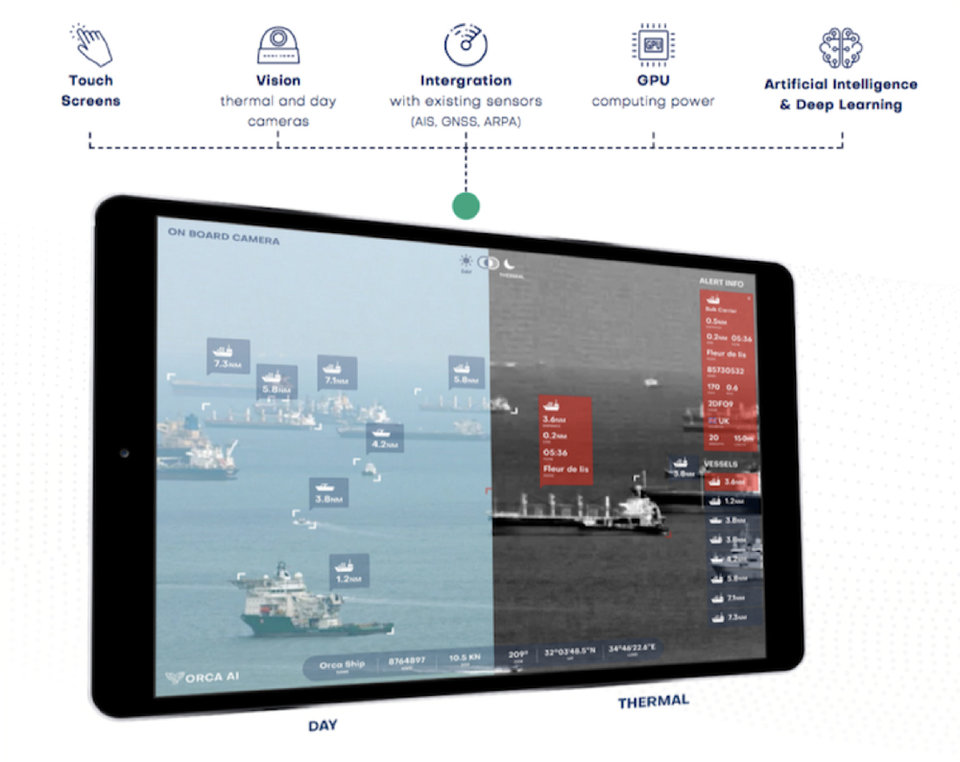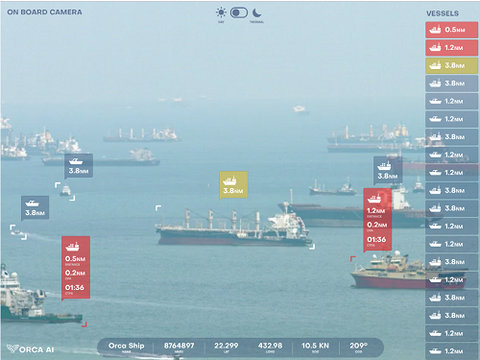Technology
Using AI to navigate the tricky topic of ship navigation
Ship navigation has been fraught with danger ever since the first vessel took to the water. Like many roles today, that of a ship’s captain has been made less risky thanks to technology. Andrew Tunnicliffe looks at Orca AI – a new navigation system which offers increased sight in the toughest conditions – and finds out how it might help
Image courtesy of
Covering 70%
of the earth’s surface, our oceans are arguably the biggest single facilitator of trade. However, it’s not just commercial ships that use them; everyday there are countless vessels navigating the world’s waterways, from military to cruise liners, container ships to fishing boats, and oil rigs to coastal contours. Their captains and crew contend with a multitude of obstacles, while the number of vessels continues to grow year-on-year.
It is, therefore, no surprise the risk of collision remains a challenge, with up to 3,000 such incidents reported annually. The good news is the number of shipping losses continues to fall, with figures for 2017 – 94 in total – the second lowest in the preceding decade.
Ship navigation: the challenges
“There are a number of dangers that ships and crews face over the course of a voyage,” explains Yarden Gross, CEO and co-founder of Orca AI, “but many of the issues primarily come down to the limitations of existing systems when navigating crowded waterways and in low-visibility conditions.”
A new entrant to the market, Orca AI provides what it calls intelligent navigations solutions which prevent collisions and save lives. “Systems that are commonplace on ships, such as radar, cannot always be relied upon to alert a crew to a hazard, and tracking the movement of multiple other vessels becomes very difficult,” continues Gross.
He says some of the most dangerous conditions are the result of low-light – common due to moonless nights, storms, fog, etc. – which impact on the crew’s ability to navigate effectively. This is particularly challenging for bigger vessels, which are more difficult to navigate due to their slower turn rounds, meaning that early detection is critical.
Systems that are commonplace on ships cannot always be relied upon to alert a crew to a hazard
“In crowded, as well as narrow waterways, larger ships in particular have trouble due to lack of extra space to manoeuvre. Navigation in these areas relies heavily on the crew's judgment to assess how to safely traverse. This leaves the window open for human error and collisions that could have been avoided.”
Gross adds that crews on the bridge can often be overloaded with information and sensor data coming from traditional navigation system which can lack clear actionable insights.
“While there have been advances in safety and communication technology, there is still a lot of work that needs to be done and ships need to be equipped with solutions that will enable them to take collision avoidance measures into their own hands, and not rely on the ships around them.”

Yarden Gross, CEO and co-founder of Orca AI
Image courtesy of Orca AI

Yarden Gross, CEO and co-founder of Orca AI. Image courtesy of Orca AI
Image courtesy of
What is Orca AI?
Ray Carriers, one of the earliest investors in Orca AI - which has now raised $2.6m in funding - is currently piloting Orca AI’s system on board its ships. It integrates with systems already on board, adding additional sensors such as thermal and low-light cameras which feed information into an AI-powered navigation system. Together, they provide long-range visibility in any lighting or weather condition, something Gross says traditional systems such as radar alone cannot do. Easy to install and use, it has the capability to detect, identify and track multiple vessels at any one time.
Orca AI uses deep learning artificial intelligence algorithms
It also requires only limited training, meaning it is ready to use almost immediately.
“The system supplements [the crew] with the additional sensors to provide the information needed to make educated navigational decisions. Its impact is felt right away.”
As well as utilising existing sensors and the additional data through its cameras, Orca AI uses what the company calls “deep learning artificial intelligence algorithms” to identify and classify vessels on the water, providing what it says are “life-saving alerts”.

Image courtesy of Orca AI
A step towards automation
“Designed specifically for the maritime environment, this innovative system is the first of its kind for the commercial shipping industry and is helping build the foundation for the future of autonomous shipping,” Gross says. The introduction of such a system is timely given the growing desire for autonomous capabilities within the industry, something Gross likens to a puzzle.
75% of the 15,000 marine liability insurance industry claims were the result of human error
“There are a number of companies actively working to develop the technologies that are needed for autonomous ships, which is an enormous undertaking. An autonomous ship has many crucial pieces that all need to fit together, and we are trying to build the best technology in the world for one of the most important pieces of that puzzle,” he says.
Autonomy will likely take some of the risk out of seafaring and, done properly, improve the levels of safety at sea and in port. According to Allianz, 75% of the 15,000 marine liability insurance industry claims assessed in its Safety and Shipping Review 2018 were the result of human error.

Image courtesy of Orca AI
Ship navigation and human error
Gross says in most cases, low-visibility combined with congested waterways, where the existing navigation tools don’t provide an accurate status of the environment, is what leads to human errors, such as failing to detect another ship or misjudging the distance between them.
“There are more ships on the water and increased traffic in areas that are already hard to navigate, which means the likelihood of a collision has only been increasing.”
He also believes that, until now, the relatively slow adoption of new technology when compared to other modes of transportation has been a factor.
Some of the most challenging requirements for a ship and its crew occur in or near port, where waters are even more crowded: “In these situations, the ship's crew must use their judgment and expertise to track and monitor other ships in the area. Current tracking systems, such as radar, are not designed to track multiple ships at the same time, leaving it in the hands of the crew. While many ships benefit from veteran crews, not all do.”
It doesn’t eliminate the need for experienced crews, it reduces the odds that they will make a mistake
Gross says there has been a lot of interest around his company’s solution as fleet owners are aware of the problems their crews face and are looking for solutions. He adds, however, they are not looking to replace crew, rather make their job less risky.
“We designed Orca AI to minimise the potential for human error in tasks that require the crew to rely on their judgment. It doesn’t eliminate the need for experienced crews, it reduces the odds that they will make a mistake.”
With incidents at sea decreasing in recent years, the industry can rest assured. One incident, however, is arguably one too many, considering the danger to life and cargo that comes with it. How far autonomy will go is yet to be seen, but utilising innovative technology is proving to be a good start in protecting those who rely on shipping for their livelihood.